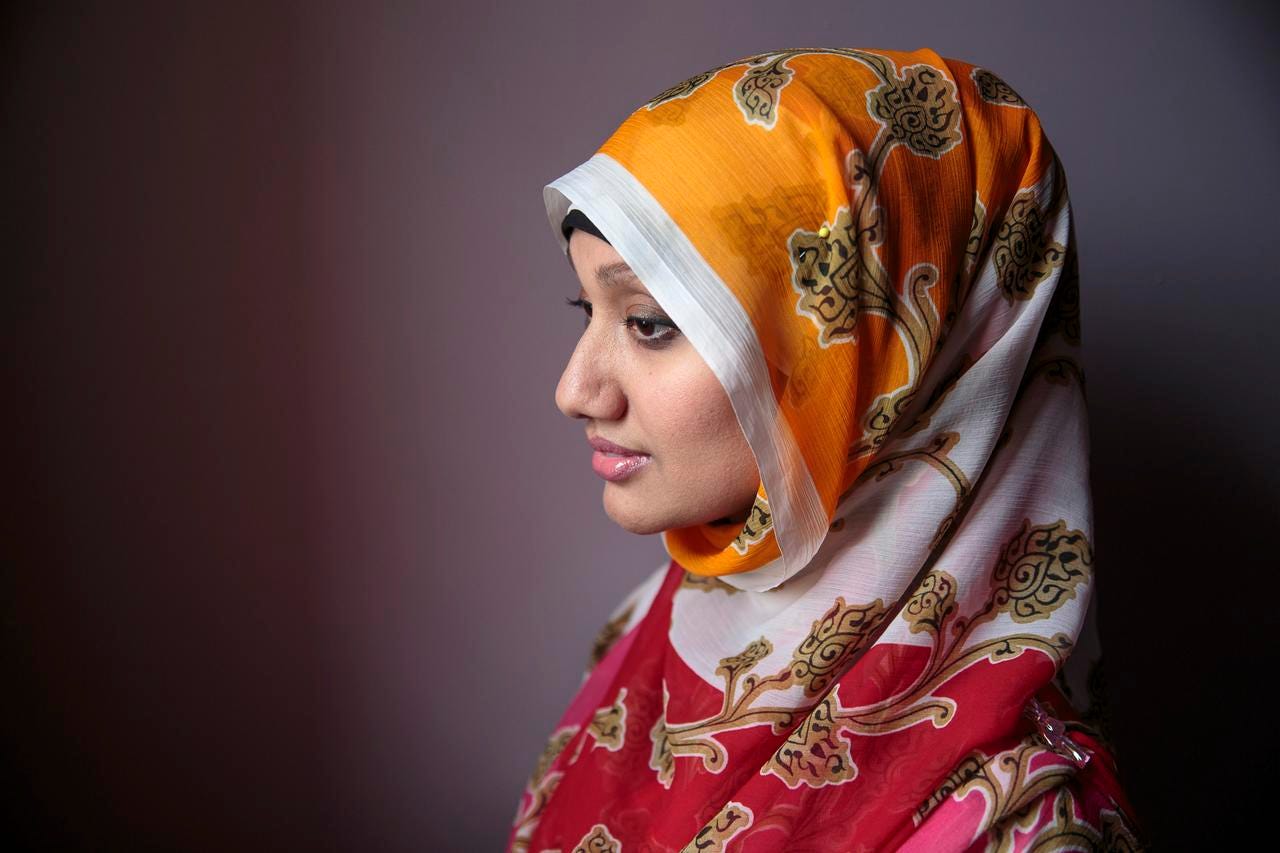That’s My Hijab
Nazma Khan is on a mission to make non-Muslims understand the virtues of the traditional Islamic veil. If you still don’t get it, she’d like you to try one on.
When Nazma Khan steps up to the podium, the crowded room grows quiet. Her exquisite face is framed by a brightly patterned silk scarf wrapped around her head and neck. We all lean in closer to hear her soft yet vibrant voice. She begins the story of her journey to the United States from Bangladesh at age eleven and how she was the only person in her Bronx school to wear the hijab—the veil or scarf that is worn to cover the head and chest of many post-pubescent Muslim women. Her peers in the Bronx tormented her throughout her time in middle school and high school, spitting at her, calling her names, and incessantly questioning why she wore the hijab. Her ordeal peaked when she began her studies at City College of New York after 9/11. At a time when some in New York City were wary of Muslims, her hijab made her a target for ridicule and suspicion.
“I was made to feel like a criminal,” she says, “as if I was responsible for 9/11 and owed an apology to everyone.”…
Keep reading with a 7-day free trial
Subscribe to Narratively to keep reading this post and get 7 days of free access to the full post archives.





